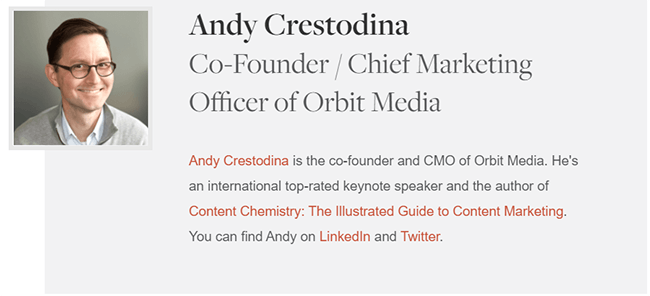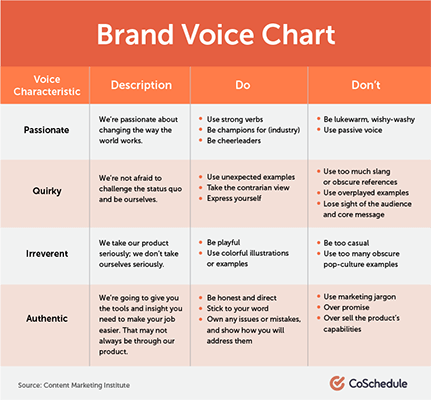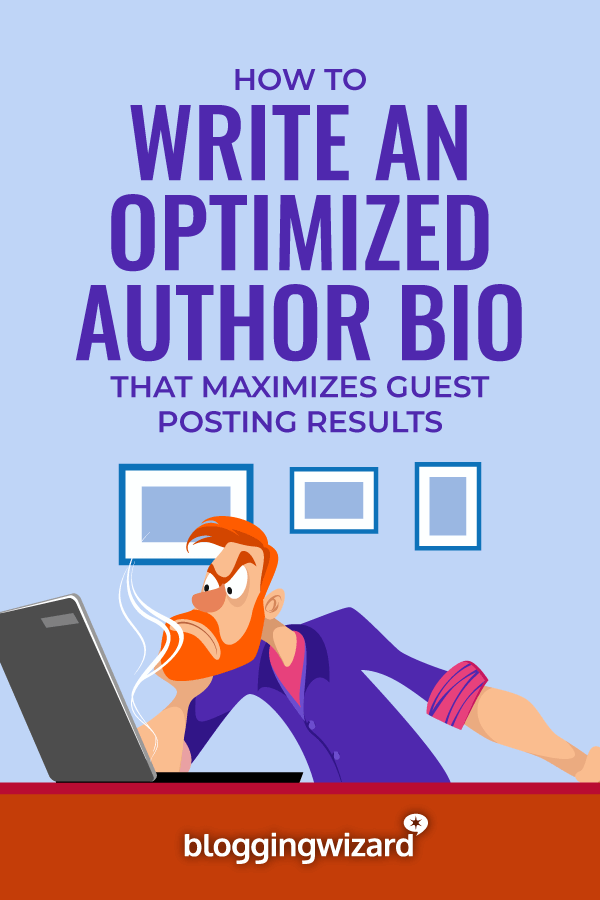How To Write An Optimized Author Bio That Maximizes Guest Posting Results: A 6-Point Checklist

Quick question:
Have you ever read an ultimate guide on how to write an author bio?
Probably not. I don’t blame you. First, if you’re like most marketers and business owners, the author bio is the last thing on your mind when you strategize your guest posting campaign.
You focus on popular aspects like:
- Finding the right target sites.
- Investigating popular content on the target blog.
- Getting into the radar of the host through social media.
- Email outreach tips and strategies.
- Studying the writer’s guidelines to master all requirements.
- How to craft an irresistible guest post pitch.
- Editing using Grammarly or alternative editing software.
The author bio? Oh, that. You just fudge together one and slap it on the post.
Another reason you haven’t studied the topic is that there isn’t much to read on it anyway. Do a Google search on ‘author bio ultimate guide.’
Results at the bottom aren’t about author bios. Google even threw in a post about dating to make up the quota. ? That’s how thin content on the subject is.

4 reasons you must take your guest post bio seriously
Why bother about your guest post author bio in the first place?
Your bio is important for 4 reasons:
People who read down to the bio are hot prospects
If someone reads down to your bio, they are a seriously engaged prospect. You’ve done all the hard work to get them that far. So you must optimize your bio to capitalize on that attention and interest.
Scanners and the curious will check it out
As you know people don’t read online, they scan. Heatmap studies by the Nielsen Norman Group show people read in an F-pattern or Zigzag pattern. Either way, the bottom of the page is one of the spots they’ll land on. Therefore, you better make it count.
It’s an opportunity for you to make a last-ditch effort to impress readers and keep them on the page. Or, to make them curious enough to check out your site.
Some readers scan the first few lines of a post. If it piques their interest, they shoot down to the bottom to find out who wrote the piece.
Transitions readers from host blog to your site
You don’t guest post for fun, right? The whole idea of guest posting is to increase brand awareness and get new prospects to your site.
Your author bio is the bridge that gets them there. Write a blah bio, readers won’t be engaged enough to follow you to your site. Nail it, and they’ll be eager to know more about you and your brand so they’ll click on your website link.
It’s your chance to make a good first impression
When people meet you for the first time one of two things happens. You sweep them off their feet and they find out more about you. Or, you turn them off and they wave goodbye.
The quality of your bio determines whether that impression will be the first of many—or the last.
Your choice.
So, what should your bio cover?
4 fundamental questions your author bio must answer
Whenever prospects come across a new brand, they have questions. Your bio must address them well for them to take the relationship further.
Prospects are asking:
- Who are you?
- What do you do?
- Who do you do it for?
- Why must I trust you?
These foundational questions are key. They sustain the readers’ interest if answered correctly.
However, you must realize it’s not a lengthy autobiography. It’s providing fascinating relevant tidbits about your life to spark interest in you and what you do.
Now that you know why an author bio is important and what’s going through readers’ minds as they read it, let’s get into the essence. Here are 6 elements of an optimized bio that make readers fall in love with you and follow you to your website.
#1. Lead with an eye-catching professional headshot
Every online page or piece of content needs a hero.
For your author bio, the undoubted hero is your headshot.
Why?
Two reasons.
Firstly, it takes up a significant portion of space. Plus, it’s the first thing readers’ eyes are drawn to since people like to look at other people’s faces—it’s human nature proven by science. Your photo must make a good first impression. You only have 40 milliseconds to impress because that’s how long it takes people to draw conclusions about you based on a photo.
LinkedIn research revealed having a solid profile photo gets you:
- 21x more profile views
- 9x more connection requests
Choose your picture carefully. Don’t use the first picture you find. This begs the question. What type of photo works best?
First things first. Use a pro-looking photo, not a messy selfie so people take you seriously. A good photo makes you look:
- Likable
- Approachable
- Competent
An analysis of the best 2,000 LinkedIn profile photos across 11 industries by JDP found a common denominator. What to guess what it was? A smile. ? A whopping 88% of the subjects wore a beaming smile on their faces:

For that reason, whatever you do in your photo please smile. Notice that a full teeth smile works best. Research by Photofeeler confirms this, noting that a smile with teeth increases likeability 2x more than a tight-lipped smile. Smile because social media is a networking party, not a somber funeral.
Here is an excellent example from Orbit Media’s Co-Founder:

How’s that for a smashing smile? Andy certainly looks the part, doesn’t he?
Warm. Confident. Capable.
That’s exactly what you need to do to convince people to connect with you.
Subliminal request to guest post host sites: include guest blogger photos in your author bio templates so they get connect better with your readers.
BTW, use the same photo across all channels for instant brand recognition.
Takeaway: Look professional, not amateurish—and please smile.
#2. Tell readers who you are and what you do, plainly
The first thing prospects want to know is who you are and what you do.
Your picture draws them in. To keep them glued to your bio quickly identify yourself and your mission.
Remember the first rule of copy here: be clear, not clever.
Some marketers try too hard. They use mystical language and clever turns of phrase. That doesn’t work. Such language makes readers slow down to try and understand what you are saying. That’s the last thing you want.
Instead, suck them into the copy fast with simple clear language.
While straightforward language does the trick, go a step better. Introduce yourself and your mission memorably.
Here’s a brilliant case in point from Henneke Duistermaat of Enchanting Marketing:

She gets brownie points for presenting herself in a lively alluring way. Who wouldn’t want to work with an irreverent copywriter who stamps out gobbledygook and makes boring business blogs sparkle?
Remember: it’s not just what you do but rather what you do for your audience. Focus on them and their needs. Frontload your mission with the benefits of working with you.
Takeaway: Introduce yourself and your mission in a clear yet fascinating way.
#3. Show off your credentials to boost your credibility
Before prospects reach out to you, they want to know if you are the real deal.
Show them why they should trust you. What makes you special? Why must they contact you and not a bazillion other brands out there?
Your authority and expertise must be apparent.
There are several ways of proving your authority:
- Share popular blogs you’ve been published on.
- Name the books you’ve written.
- Tell them about your certifications
- Display your long track-record in your industry.
- Reveal press mentions from known publishers.
- Unveil famous brands you’ve worked with.
- Impress them with big results you’ve got in the past.
Here’s a little equation that sums up the power of credentials.
Credentials = Authority = Authenticity
Authenticity is a biggie for consumers. Up to 86% of consumers say they support authentic brands:

If you can prove your authority through social proof you are in business. Talk about your achievements unashamedly. This is no time to be modest.
Brag. Toot your own horn. It ain’t bragging if you did it.
Of course, the achievements must be industry related. Your best-selling book on how to raise Labrador Retrievers won’t work if you are in the tech industry. Sorry, buddy.
SaaS and ecommerce writer Kaleigh Moore showcased her authority brilliantly:

She wraps up her bio by pointing out the mega-sites she’s been featured on. This inspires confidence in her copywriting abilities. On seeing these massive brands she’s worked with, prospects believe she has the chops to help them.
Takeaway: Prove your authority with pride—you’ll get the prize of believability.
#4. Humanize your brand
Hands up if you think most business copy is boring?
Mine is up too. ?
Ask those brands why they communicate as if they are writing a thesis. The answer you will get: we want to sound professional. Unfortunately, a bone-dry corporate style doesn’t engage readers. It feels distant and impersonal.
This is the opposite of what you want your bio to do.
Brand humanization makes you:
Relatable. Reachable. Authentic.
To hook readers, humanize yourself.
- Tell them about your dearest hobby.
- Speak about your favorite sports team.
- Disclose an eccentric habit you have.
- Share fascinating personal tidbits.
- Sprinkle a generous dollop of humor.
Speaking of humor, British and Finnish researchers found that humor releases endorphin (aka the happiness chemical) in the brain and promotes the establishment of social bonds. Put simply, humor builds a bridge of friendship between people and sparks excitement.
Humor works, even in B2B circles.
Stephan Debois of Survey Anyplace touches on his kite surfing hobby:

Don’t take such simple things for granted. They are powerful emotional hooks that reel prospects deeper into forming a meaningful relationship with you.
Takeaway: Humanize your brand to bond quickly with readers.
#5. Stay consistent with your brand style
Consistency is important in branding.
Why?
Because a brand is a corporate personality. For people to trust you, you must project the same personality regardless of which channel you are on. Any split personality tendency leads to friction as noted by LucidPress.

Friction stops prospects on their tracks. They don’t move on to the next stage of the customer journey you have mapped out for them.
So your bio must fit seamlessly into your brand voice and tone.
Stay true to your brand voice whether it’s passionate, quirky, irreverent, or authentic as summed up by CoSchedule:

Brand positioning expert Peter Sandeen characteristic simple relaxed style shines through as usual in his bio:

Visit his site. You’ll meet the same approach. Be you in your bio.
Takeaway: Be the same person in your bio that you are everywhere else.
#6. Conclude with a forceful call to action
You’ve done well if your reader is still reading your copy.
Now, it’s time to get the click.
Take them home with you—to your website. This is a critical moment. Give it the full undivided attention it deserves. Don’t make the mistake of thrilling your newly-found fans but leave them stranded on the host site.
Wondering how?
By not including a call to action.
Besides not having a call to action, another colossal mistake marketers make is taking red-hot guest posting traffic to their homepage. Sigh. Are you telling me you worked your socks off to impress people but you are taking them to the most distractive page on your site?
C’mon.
Take them to a more focused page. A distraction-free landing page with an irresistible tailor-made offer. This enhances your chances of conversions: a new subscriber, lead, or customer depending on your offer.
You can offer them:
- A content upgrade that compliments the piece.
- A massive discount on your latest product or service.
- A free trial of your SaaS product.
When writing the CTA these verbs are your friend:
- Get or grab your [valuable resource]
- Download [valuable resource]
- Start your [free trial]
- Follow me on [social channel]
Top copywriter and content strategist Jacob McMillen knows how to use this tactic.
Here is his bio:

It takes readers to this offer:

Readers are likely to take the desired action because the page is focused and has a personalized offer.
This strategy is an easy way for you to rank your services pages. You simply link to your services page in your guest posts. This works especially if you do a lot of guest blogging or have a mammoth campaign.
Jacob has been able to rank his primary service page for 30+ terms simply by including backlinks with his target search terms as anchor text in his author bios.
Takeaway: Drive traffic to your landing page through a persuasive CTA.
Bonus tip: tweak your bio according to who you are writing to
For higher engagement, don’t use the same bio everywhere you guest post.
Take a moment to refine it to suit specific audiences.
Writing to Mompreneurs? Talk about kids.
Writing to Millenials? Talk about technology.
Writing to Baby Boomers? Talk about the virtues of hard work.
These subtle touches help you to connect with people at a deep psychological level. They feel you get them.
If you go the extra mile, you will reap the rewards.
Your author bio: short copy that packs a big punch
Your author bio may look insignificant.
It’s anything but that.
It’s a powerful marketing tool you can use to:
- Start a relationship with prospects.
- Bond with prospects.
- Get new subscribers, leads, and customers.
- Demonstrate your expertise.
- Give your site an SEO boost.
Pull out all the stops in your next guest post bio.
The results might surprise you.

